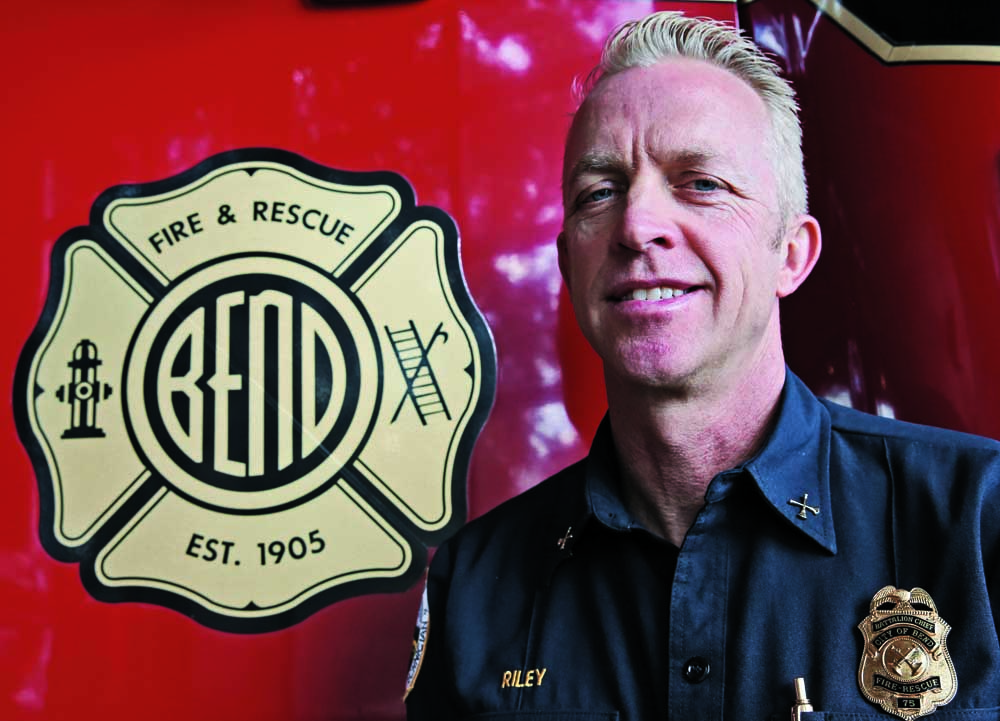Cleaning up after ‘complete disaster’
Published 5:00 am Thursday, May 23, 2013
MOORE, Okla. — Two days after a huge tornado barreled through this working-class town, authorities reopened the worst-hit neighborhoods for the first time Wednesday, giving residents a few hours to search for wedding rings, retrieve abandoned pets and pry apart a briar patch of rubble to see what had survived, and what had not.
At 3 p.m. the police and military members who had been barricading the streets stepped aside to allow scores of people back into their wrecked neighborhoods. People carried tarps and tubs, crowbars and chain saws and anything else that could help them sift through the heaps of what had once been their houses.
Brick walls lay in heaps. Beds and couches lay shredded like wisps of cotton. Some homes seemed to have been wiped clean off their foundations. Plaza Towers Elementary School, where seven students died, looked as if it had been hit by a bomb.
“All you can say is it’s a complete disaster,” said Doug Stills, 73, a longtime Moore resident whose son’s home was flattened.
With search efforts winding down and officials saying that they did not expect to find any more bodies in the rubble, Wednesday’s homecoming marked a first step in the long and expensive process of rebuilding Moore after yet another deadly tornado. Officials said the storm had caused as much as $2 billion in damage, pummeling 12,000 homes and affecting 33,000 people.
MOORE, Okla. — Along a nearly 20-mile path of caved-in buildings, upside-down cars and muddy rubble, there was a different sort of stunning sight Wednesday — a homeowner, broom in hand, sweeping the driveway, trying to make at least one patch of land the way it used to be.
For more than a century, this Oklahoma City suburb has taken a battering in Tornado Alley. At least 22 tornadoes have struck in or near Moore, killing more than 100 people, since the town was incorporated in 1893, according to the National Weather Service. The tornado that destroyed dozens of homes, businesses and schools Monday carved a destructive path for 17 miles and killed at least 24 people, but the one that touched down May 3, 1999, left an even longer, deadlier trail, staying on the ground for 38 miles and killing 36.
Despite the continual destruction, people have not fled Moore. They have stayed put and rebuilt, and others have moved to the town. Nearly 19,000 people lived here in 1970; by 2011, there were 56,000 residents.
Moore is a working-class suburb at the southern edge of Oklahoma City, where churches outnumber bars and Republicans outnumber Democrats. In the 1890s, a railroad employee named Al Moore who lived in a boxcar had trouble receiving his mail at a settlement here. He painted his name on a board, nailed it on the boxcar and the town’s name was born, city officials say.
Most residents are white, and the town has a median household income of $56,601, higher than the $44,973 median in Oklahoma City. People park their RVs in the driveway, next to their cars as well as their boats. They work in the oil and energy industry, run small businesses, cut hair, wait tables, tutor schoolchildren. The longtime mayor, Glenn Lewis, owns a jewelry store. The Republican lawmaker who represents the area in the state House of Representatives, Mark McBride, owns a roofing and home building company.
“It is a blue-collar town,” he said. “We’re pretty plain. We pay cash for things down here.”
McBride, 52, was born and raised in Moore and still lives here, and in his cowboy hat, boots and jeans he embodies the town’s unpretentious manner. At a news conference, he stood and announced on live television that, if anyone needed a place to stay, he had room at his house. Then he gave out his cellphone number.
“I wasn’t joking,” McBride said. “I’ve got extra beds and a couch.”
Ken and Doris Saxon moved to a red-brick home a few blocks from City Hall in 1962 with their four young children. A few years later, a tornado damaged Moore High School, where Doris Saxon’s brother was band director. There were other close calls: The 1999 tornado struck about 10 blocks north, and Monday, they crouched in their bathroom, holding pillows and comforters over their heads. Their home, and their neighbors’ houses, were spared major damage.
On Wednesday afternoon, the couple — their children are grown, and they are great-grandparents — was busy outside in the yard, picking up fallen tree limbs and branches. Doris Saxon, 78, a retired office manager, had her red gardening gloves on, while Ken Saxon, 80, a retired auto mechanic, rested in the shade. She recalled that, when the tornado hit the high school decades ago, her brother had been leading the school band in a performance. The roof came off and the rain poured in. He told them to stay, and keep playing.
“In California you have earthquakes,” Doris Saxon said. “In New York, you have hurricanes. Everywhere you’ve got something. We just choose this over everything else. It’s a good place to live. It’s home.”
In some of the damaged areas of the city, it is hard to tell what Moore used to be. In a residential area near the destroyed Moore Medical Center, the homes on Southwest Sixth Street were reduced to piles of wood, concrete and red brick. Marking the horizon were a few shells of homes, barkless trees and chimney stacks.
Late Tuesday evening, this flattened Moore was not the real Moore: There were no residents picking through their belongings, only reporters and news crews and TV trucks. Nearby, there were blockades run by National Guard members in the middle of what were once bustling intersections.
On Wednesday, the real Moore was on display at the Madison Place subdivision, where homeowners backed trailers and pickup trucks into their driveways and began cleaning up. The neighborhood was heavily damaged, but still recognizable, though with surreal touches. A thick shard of wood punctured a blue slide at a playground like a dagger; a UPS driver made his rounds, delivering to homes that were barely standing.
At a two-story brick house at the end of a cul-de-sac, you had to imagine the upstairs room where Crystal Sheppard’s children once slept. There was no more upstairs. There was just a window pane, and open sky. Sheppard, 26, moved to Moore in April 2011 with her husband, her 4-year-old son and two girls, who are foster children, drawn by the reputation of the local school district. She is a stay-at-home mother. Her husband, Daunte, 27, is a finance manager at a Chevrolet dealership.
On Monday, Crystal Sheppard was at home with the two girls when the tornado approached. Her son was at his pre-kindergarten, and her husband was at work. She grabbed the girls and, joined by a neighbor, sped away. “It was behind us and we just tried to keep ahead of it,” she said. “It was literally pedal to the metal.”
On Wednesday, she and her husband removed some of their undamaged furniture and appliances. Underneath the rubble in the patio, she pulled her son’s pre-K graduation picture.
They will stay in town. “We’re not moving from Moore,” she said. “We’ll just have a shelter built.”







